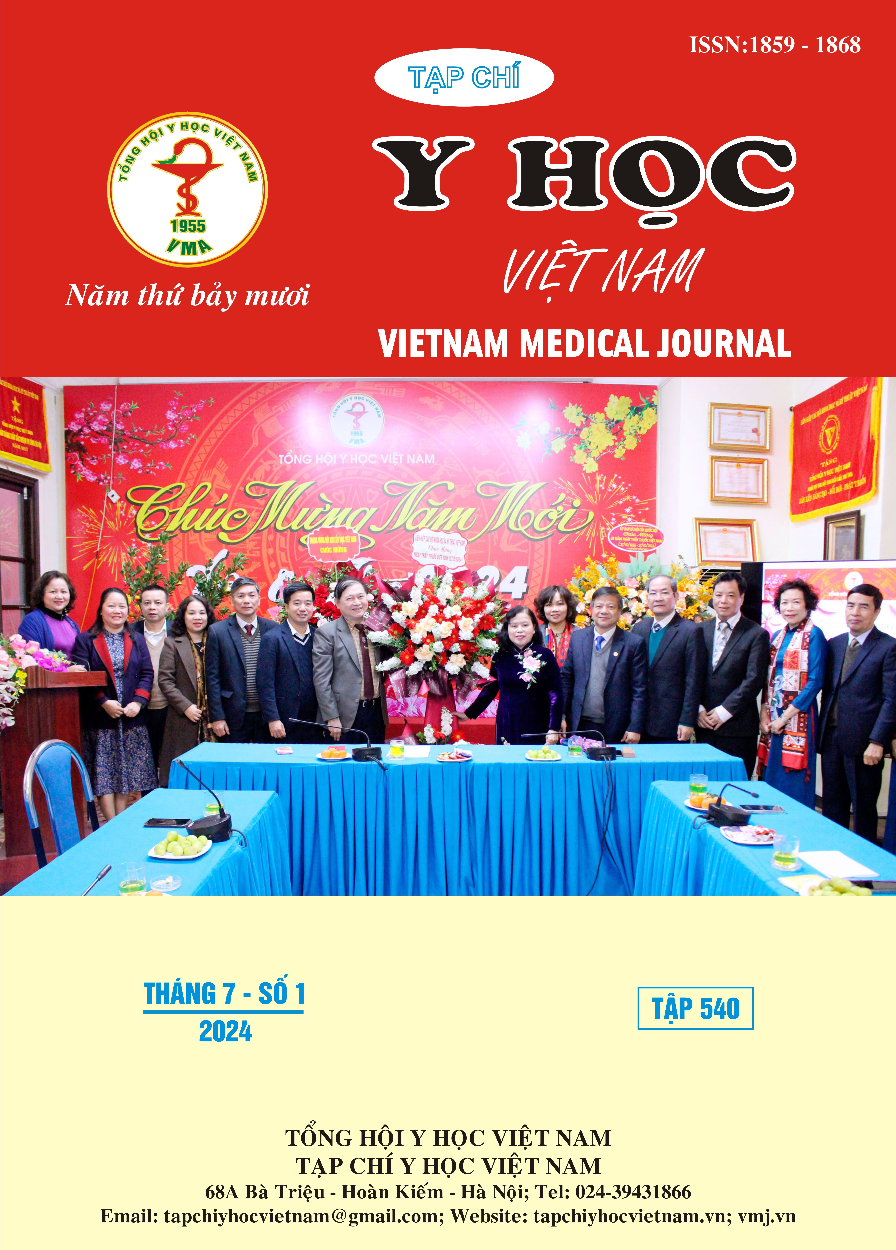STUDYING ON THE EXPRESSION LEVEL OF CYLD IN PATIENTS WITH NON-HODGKIN LYMPHOMA
Main Article Content
Abstract
Objective: Determine the mRNA expression level of CYLD in NHL patients. Evaluate the relationship between mRNA expression level of CYLD and some clinical, subclinical characteristics in NHL patients. Methods: 83 patients were diagnosed with NHL and 83 healthy people as a control group. Quantitative RT-PCR was used to analyze mRNA expression of CYLD. Results: The average age of the NHL patient group was 56.4 ± 16.1 years. The highest age is 86 years old, the lowest age is 17 years old. The percentage of age group ≤ 60 and over 60 is 51.8% and 48.2%, respectively. Male account for 63.9%, female only 36.1%. Stage (I and II) is 41% and 59% is stage (III and IV). Aggressive lymphoma group account for 84.3% and only 15.7% in indolent group. The mRNA expression level of CYLD in the NHL patient group is higher than the control group with P < 0.05. There is no statistically significant in the mRNA expression level of CYLD with age , stage, progression group and some subclinical characteristics in patients with NHL. Conclusion: The mRNA expression level of CYLD in the NHL patient group was higher than the control group, has statistically significant. There is no statistically significant relationship between the mRNA expression level of CYLD and some clinical, subclinical in NHL patients.
Article Details
Keywords
Non-Hodgkin lymphoma, CYLD expression level
References
2. Grondona P., Bucher P., Osthoff K.S. (2018). NF-κB Activation in Lymphoid Malignancies: Genetics, Signaling, and Targeted Therapy. Biomedicines. 6(2):38.
3. Wu W., et al. (2016). High LEF1 expression predicts adverse prognosis in chronic lymphocytic leukemia and may be targeted by ethacrynic acid. Oncotarget. 7(16): p. 21631.
4. Van Andel H., et al. (2017). Loss of CYLD expression unleashes Wnt signaling in multiple myeloma and is associated with aggressive disease. Oncogene. 36(15): p. 2105-2115.
5. Tang S.Y., et al. (2023). Clinical significance of cylindromatosis expression in primary hepatocellular carcinoma. Arab Journal of Gastroenterology. 24(1): p. 58-64.
6. Papadatou V., et al. (2022). CYLD expression in endometrial carcinoma and correlation with clinicohistopathological parameters. Taiwanese Journal of Obstetrics and Gynecology. 61(4): p. 596-600.
7. Xu X., et al. (2021). Down-regulation of cylindromatosis protein phosphorylation by BTK inhibitor promotes apoptosis of non-GCB-diffuse large B-cell lymphoma. Cancer Cell International. 21(1): p. 1-14.


